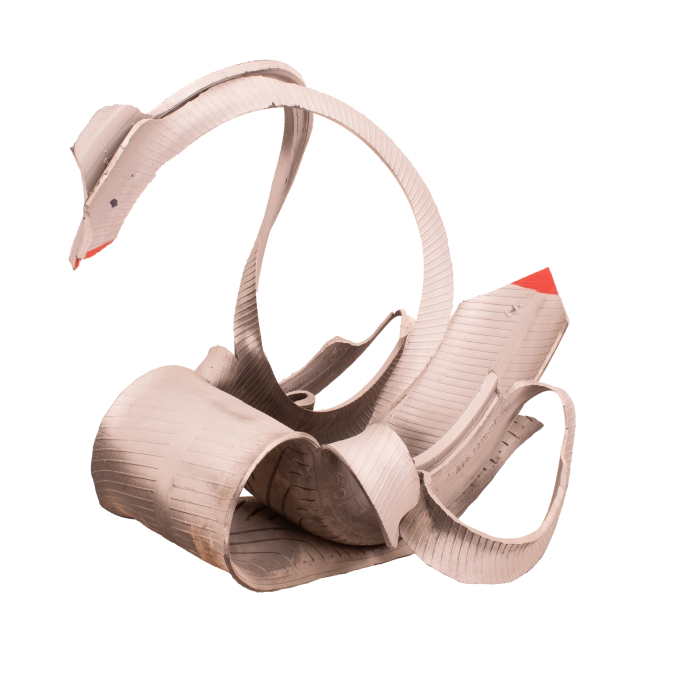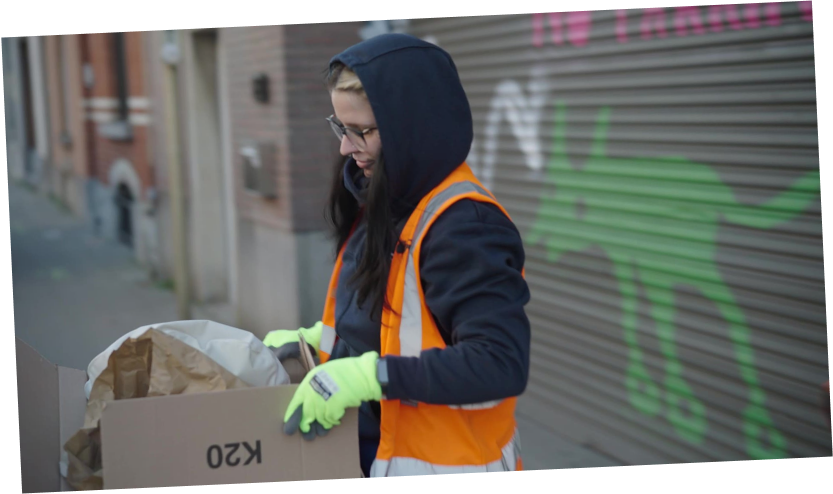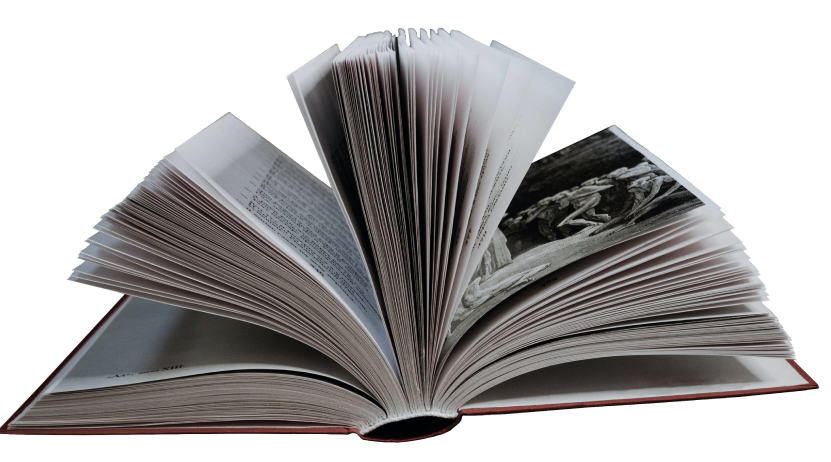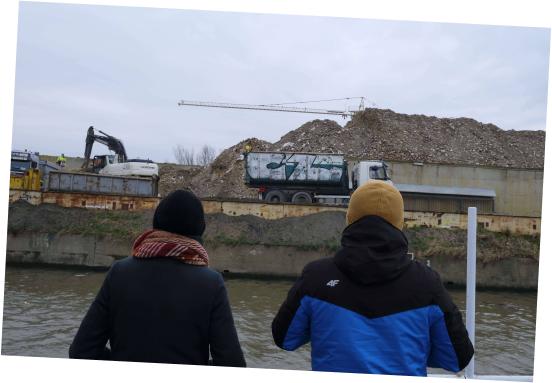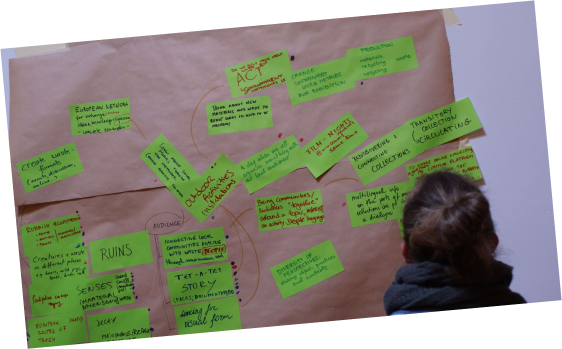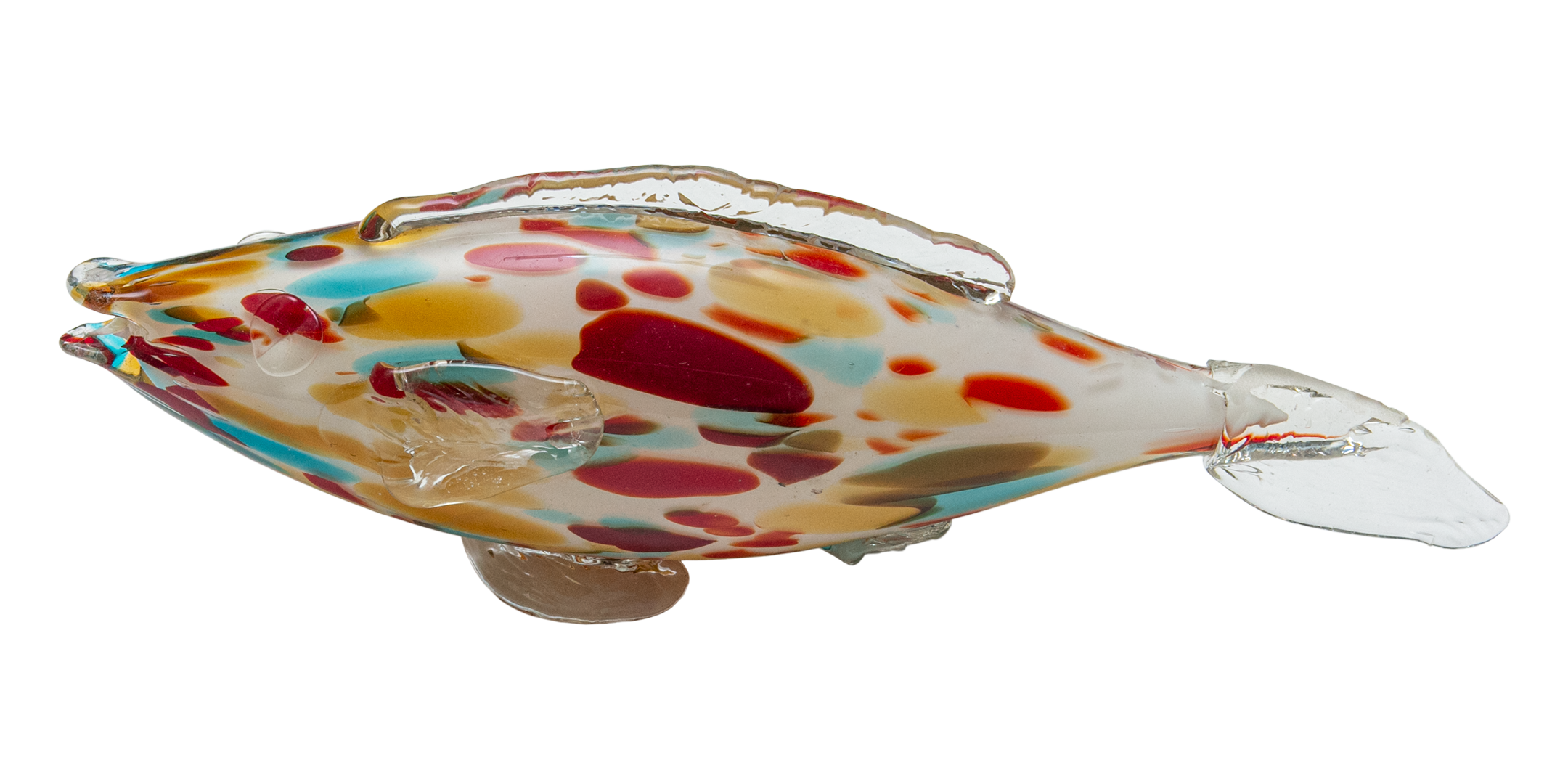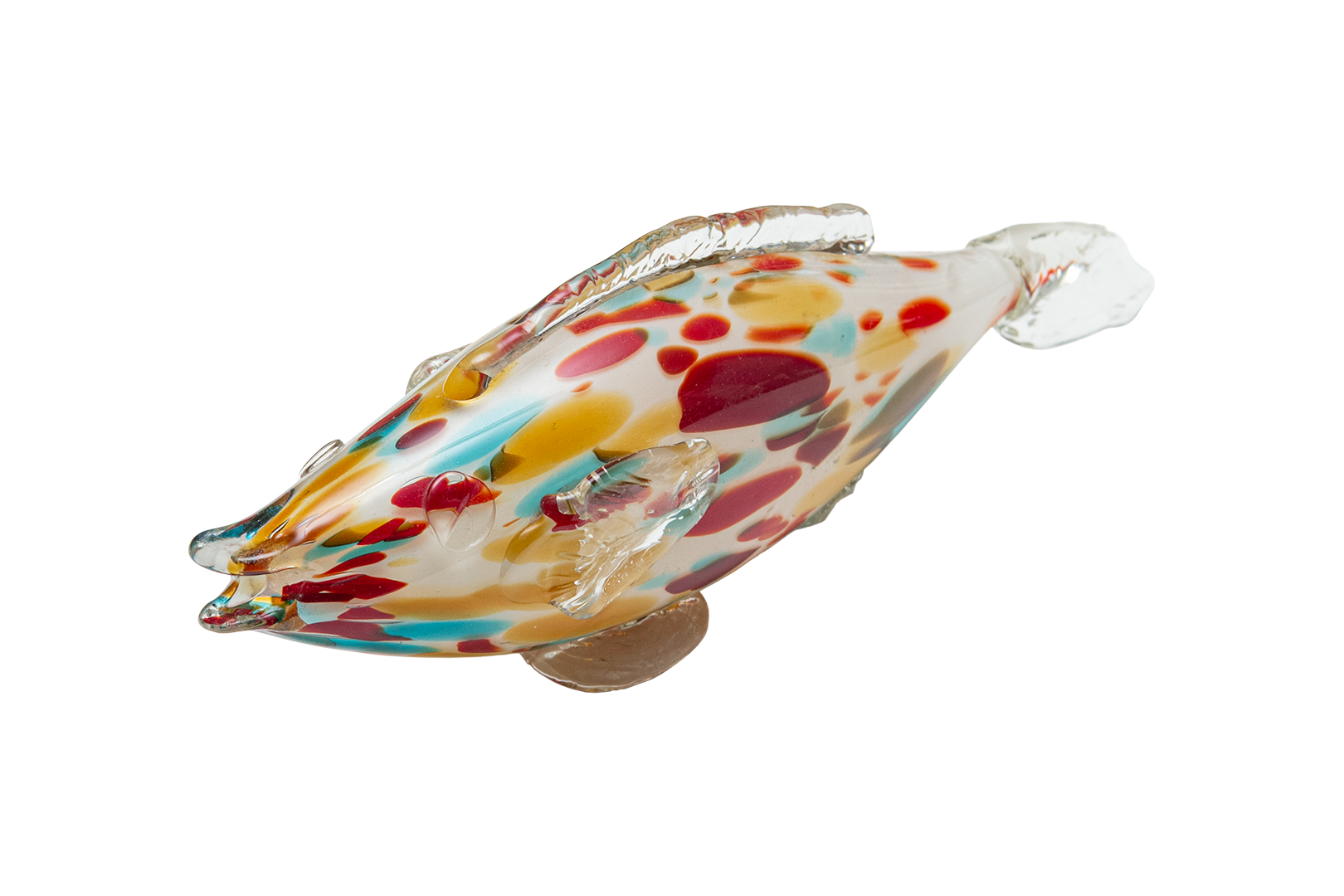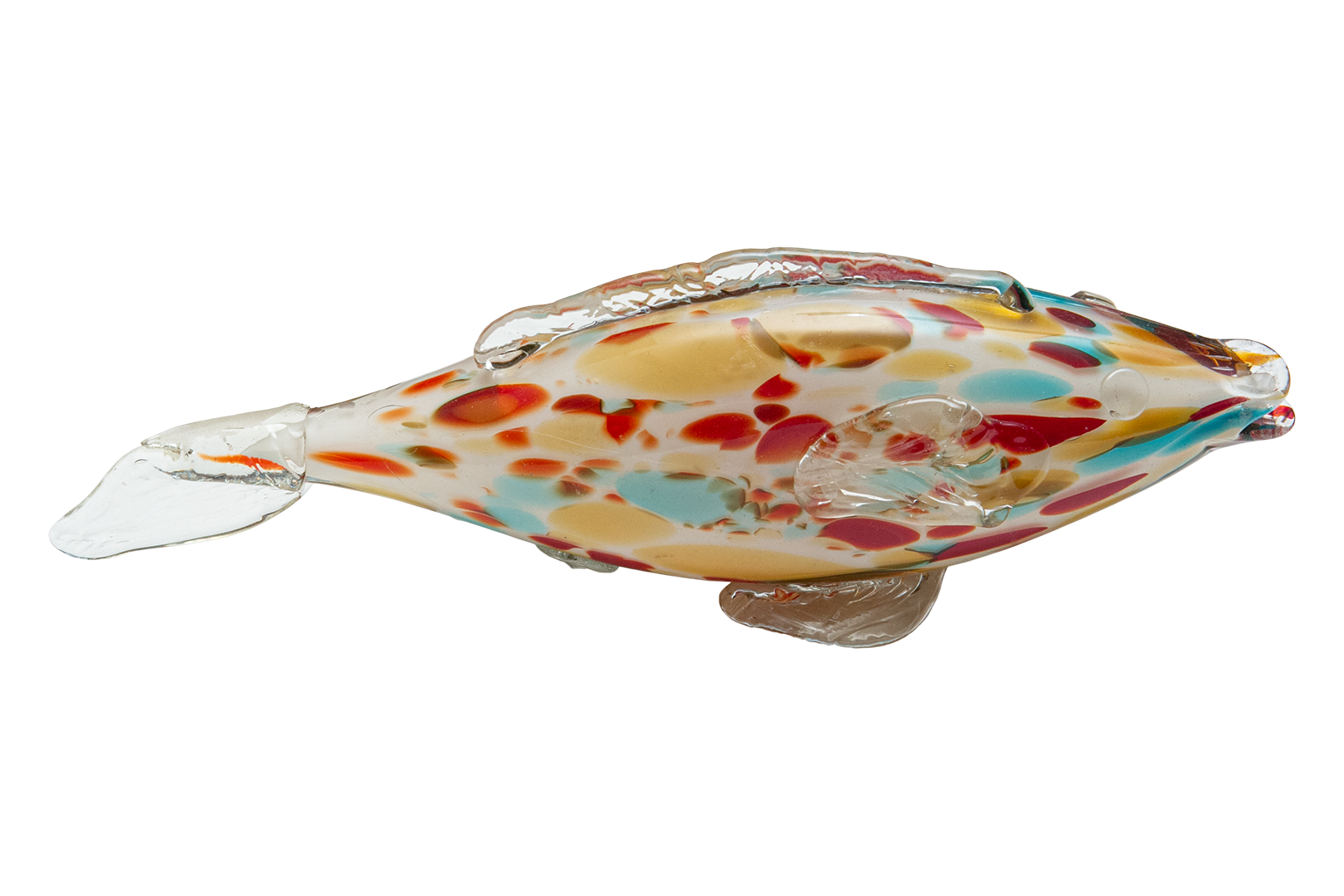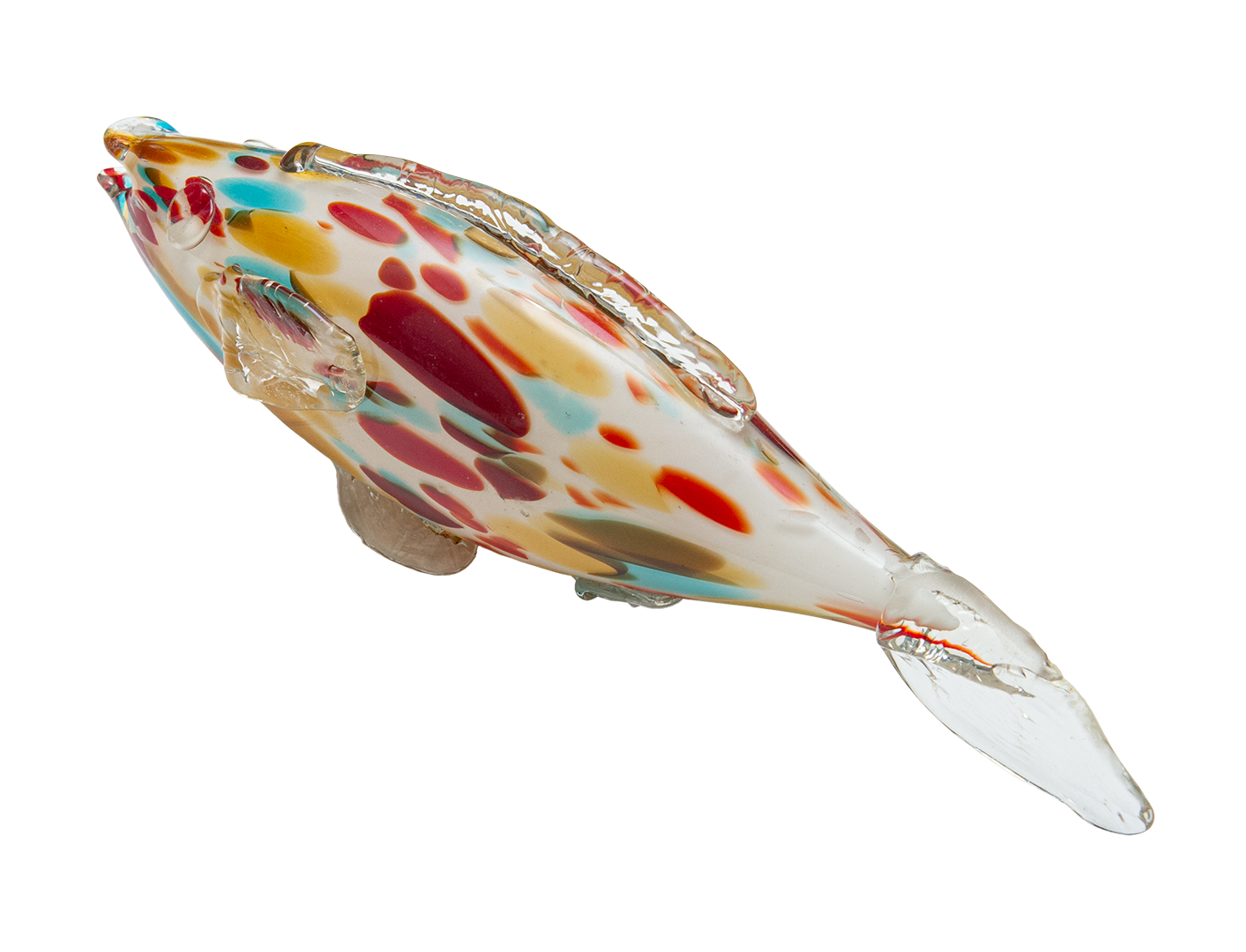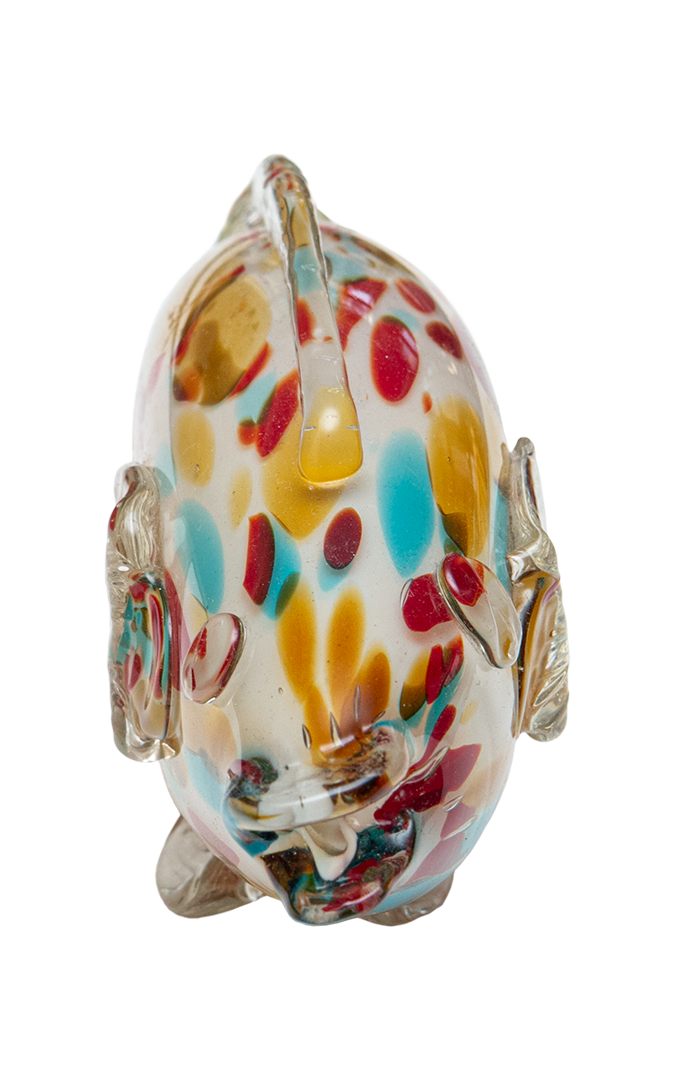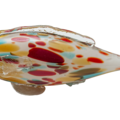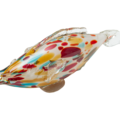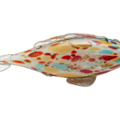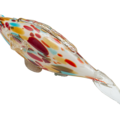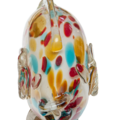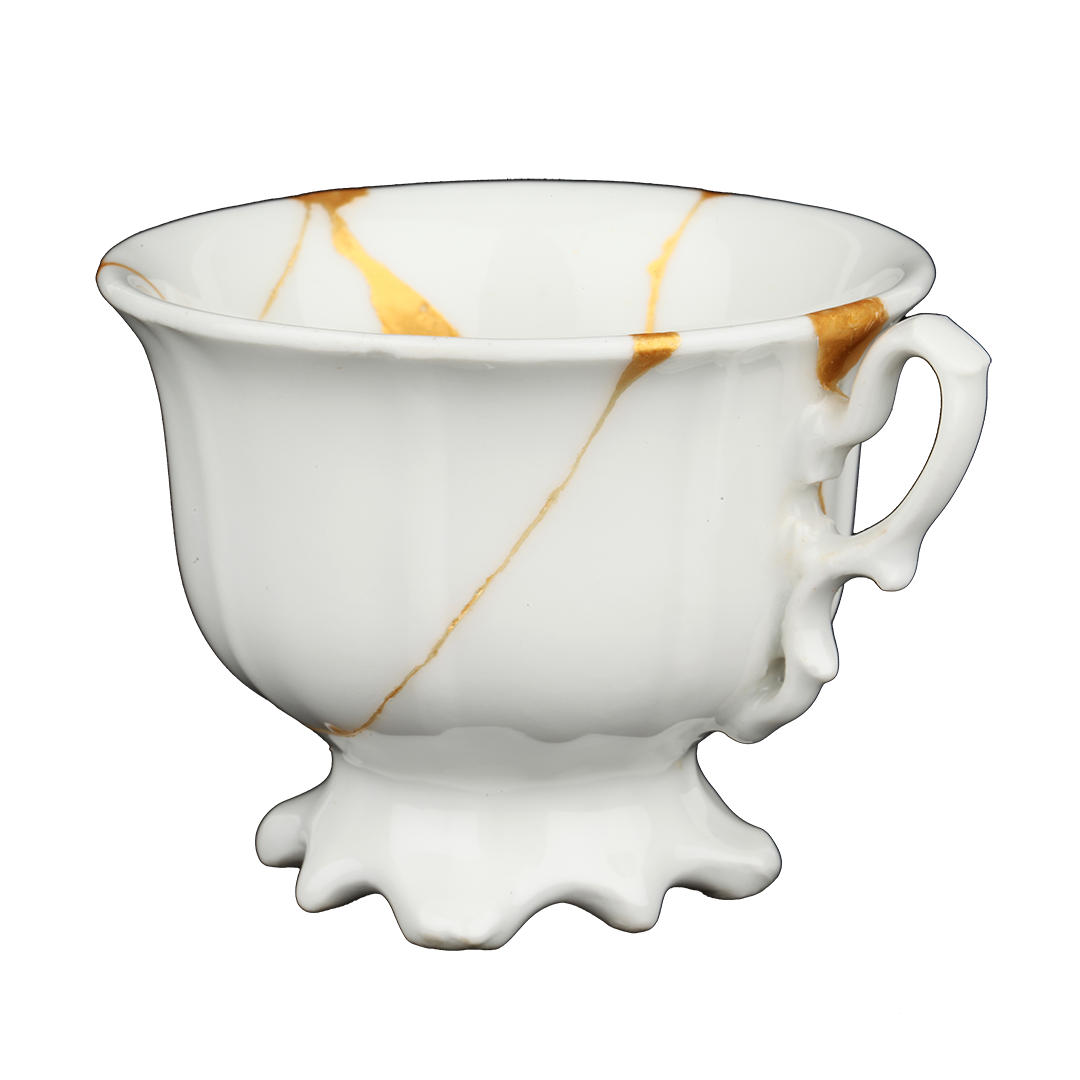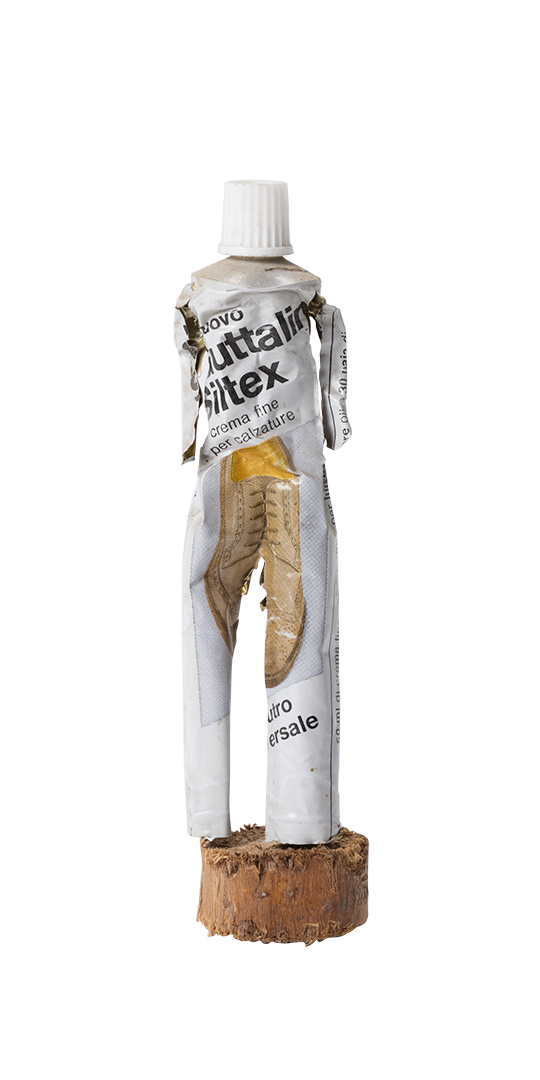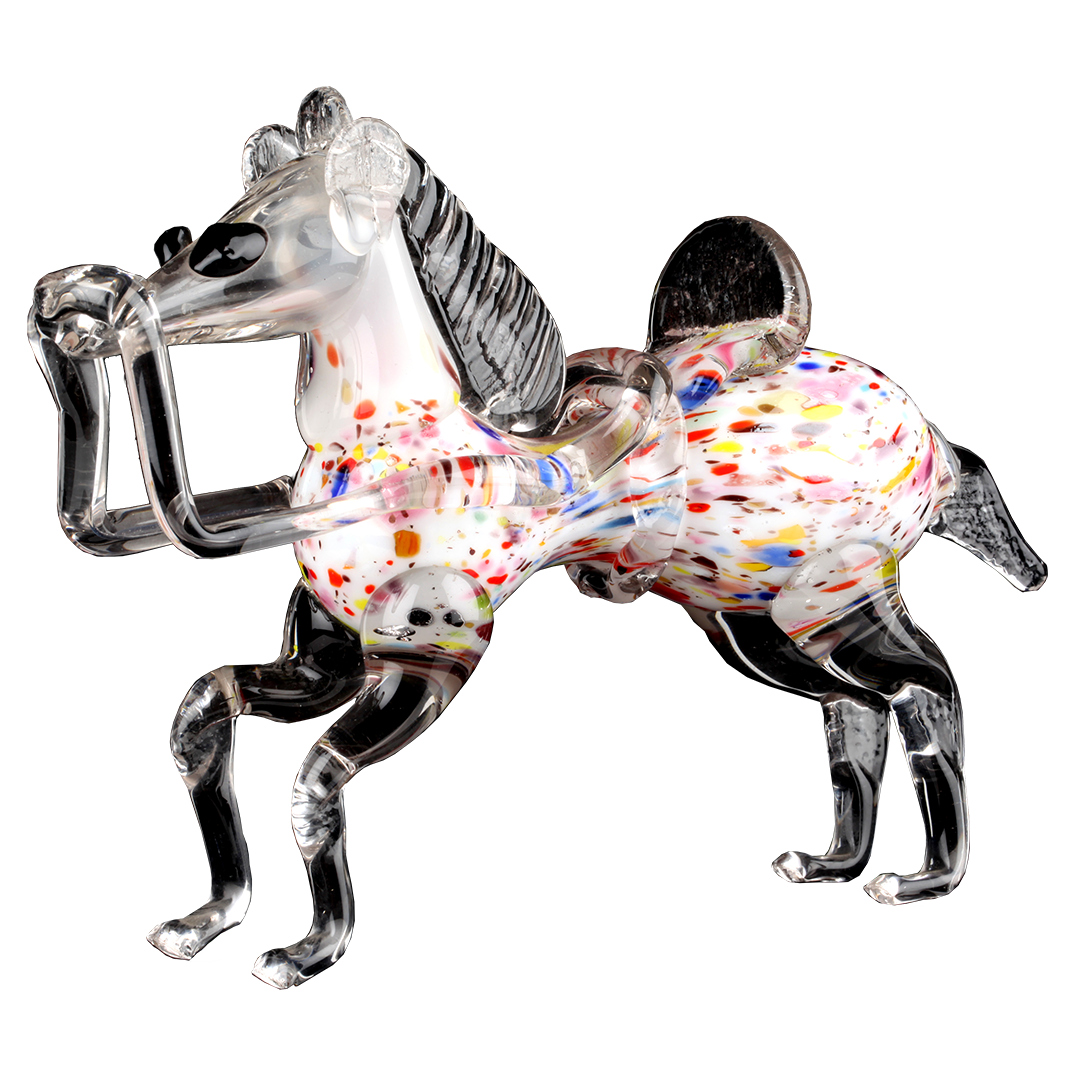Artist/Maker Unknown
Date Production/Creation
C.1960s - 1970s
Entry in the museum collection
C.1990s - 2000
Place of origin
Unknown, probably Transylvania
Current location
National Museum of the Romanian Peasant, Bucharest, Romania
Material
Glass blowing
Dimension
30.5 x 10 x 6 cm (L x W x H)
Inventory Number C.Ob-0048
Keyword Home Art Memory
Copyright National Museum of the Romanian Peasant
Status In storage
Image Credit Vladimir Bulza / copyright NMPR
Colourful glass fish created in communist Romania.
What is this object about, who are the people behind it?
This artefact was probably manufactured at one of Romania’s glass-blowing factories, of which there are many in Transylvania, with two of the most popular being at Pădurea Neagră and Tomești. Despite the fact that glass blowing is a profession requiring individual skill and dexterity, these objects were rarely signed by their creators, who generally belonged to glass cooperatives or companies. Under the communist regime, these were managed by a faceless state body designated to act as the sole supplier, and to which the glass-blowers’ work was therefore directly ascribed.
What places is this object related to, how European/transnational is it?
Although the origin of the artefact itself is unclear, we know that glassware was being manufactured in Transylvania from the start of the 7th century, when workers were brought in from Italy, and more specifically from Murano; over time, they were joined by German and Slovak workers. Later on, the Pădurea Neagră and Tomești glassworks opened in Transylvania. From midway through communist times, glass fish would have appeared in most households in Romania. the image that lingers in national mythology is that of such fish sitting next to woven doilies as decorations on cathode-ray tube TVs. Some sources mention that around 90-95 % of the products manufactured were exported to the USA.
Why and how did this object arrive in the museum’s collection?
The object is part of a larger collection donated by the private donor Marius Cazan. After the revolution which overthrew the communist regime in 1989, the new Museum of the Romanian Peasant announced that it was accepting artefacts from the general public for inclusion in its exhibitions and archives, thus underscoring its role in highlighting everyday history and Romania’s recent past. A great many of these fish came into the museum’s possession for use in exhibitions such as Cei din lume fără nume (2012) and Muzeu3017 (2017).
What is the relation of this object to waste?
The artefact is a common object only recently agreed by museums to be of relevance in the light of historical events or high culture. It is not per se a mass-produced object, as the skills of a craftsman were needed for its manufacture. It is more than a domestic item as it reflects the owner’s lifestyle and mirrors a broad spectrum of social attitudes. It encapsulates normal life away from the regime but also shows how ordinary objects could help legitimise power by becoming icons for the regime. Under communism, decorations make luxury democratic and accessible by offering the chance to turn a house into a home; today, such objects are often perceived as kitsch.

